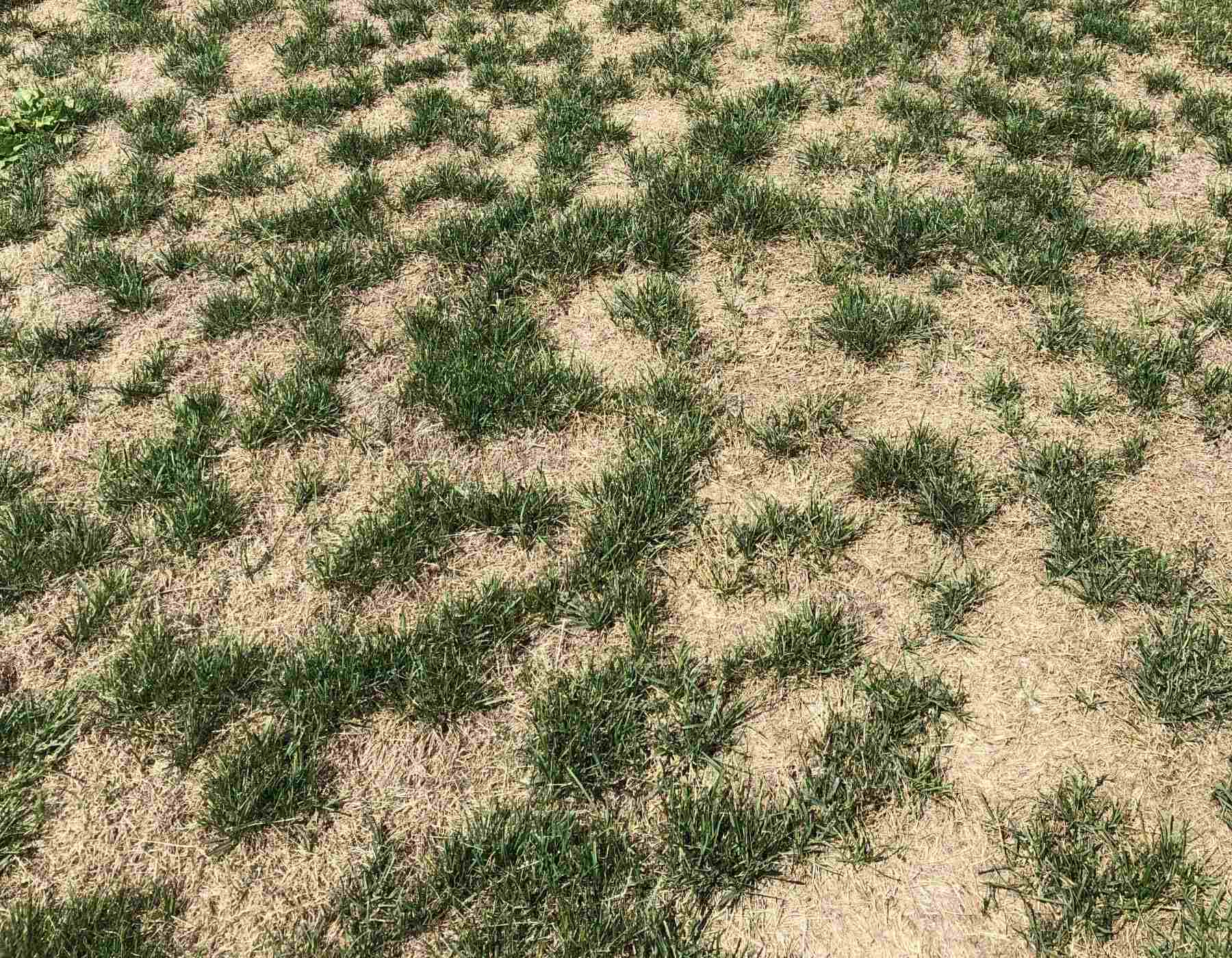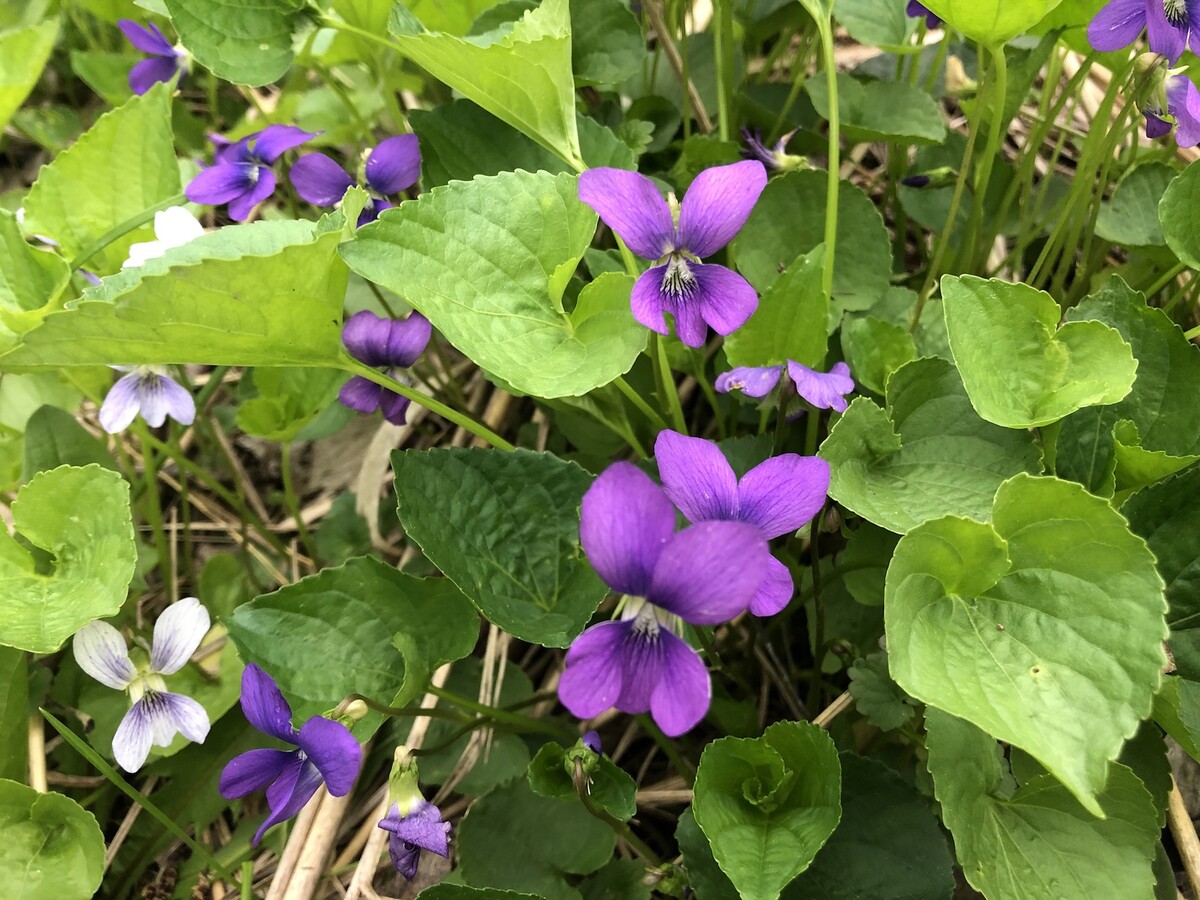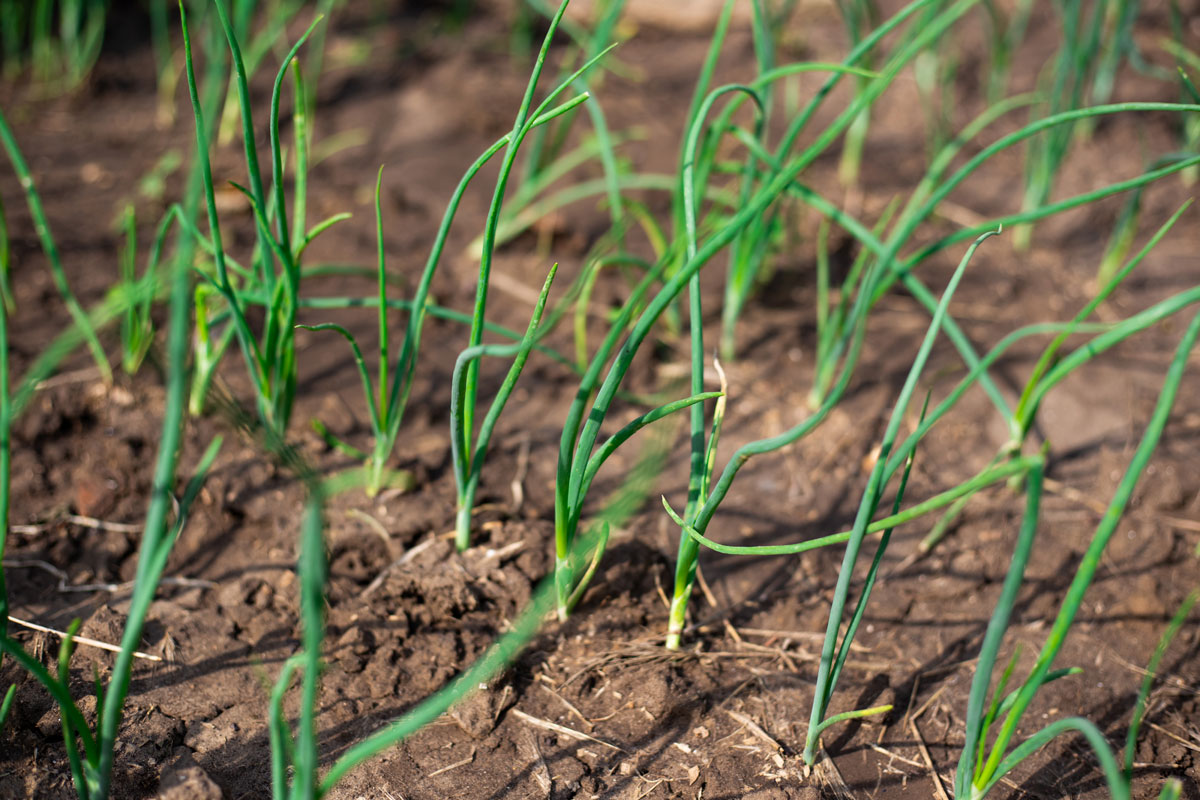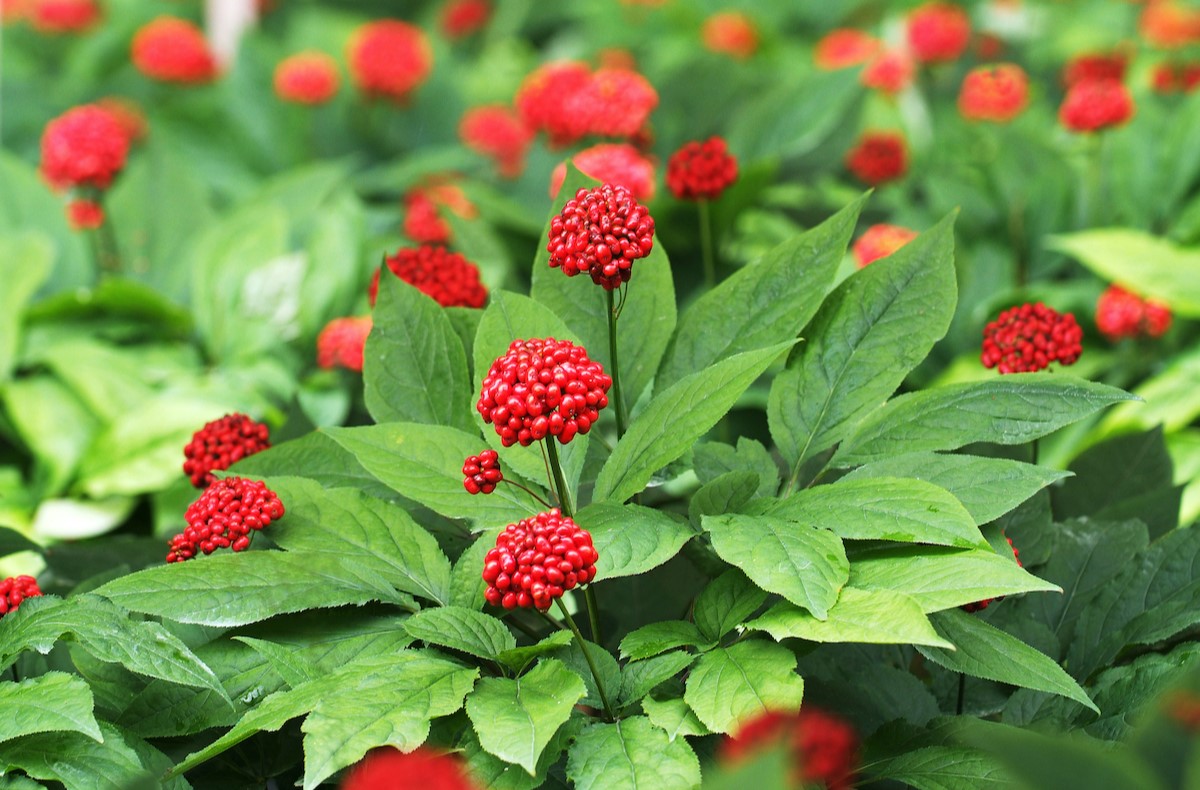Home>Garden Essentials>When To Plant Grass Seed In Wisconsin


Garden Essentials
When To Plant Grass Seed In Wisconsin
Modified: May 6, 2024
Looking to start a garden in Wisconsin? Find out the best time to plant grass seed and get your garden growing with our expert tips.
(Many of the links in this article redirect to a specific reviewed product. Your purchase of these products through affiliate links helps to generate commission for Storables.com, at no extra cost. Learn more)
Introduction
Welcome to the world of gardening and lawn care in Wisconsin! Whether you are a seasoned gardener or a novice looking to create a beautiful green space, understanding the best time to plant grass seed is essential. Wisconsin’s climate can be challenging, but with the right techniques and knowledge, you can achieve a lush and thriving lawn that will enhance the beauty of your outdoor space.
Before diving into the details of when to plant grass seed in Wisconsin, let’s consider a few factors to ensure successful growth. The type of grass you choose, the condition of your soil, and the local climate are all crucial elements to take into account.
The ideal time to plant grass seed in Wisconsin depends on the region and the specific grass type. Additionally, preparing the soil properly and following the recommended steps for planting and care will greatly increase your chances of success. So, let’s explore the best time to plant grass seed in Wisconsin, the different types of grass that thrive in this climate, and tips to ensure your lawn flourishes.
Key Takeaways:
- Choose the Right Time: Plant grass seed in Wisconsin in spring or fall for best results. Consider the local climate and grass type for a thriving lawn.
- Prepare and Care: Clear the area, test the soil, and follow seeding instructions. Protect and maintain the grass seed for a lush Wisconsin lawn.
Read more: When To Plant Grass In Wisconsin
Factors to Consider Before Planting Grass Seed
Before you start planting grass seed in Wisconsin, it’s important to consider a few factors to ensure the best possible results for your lawn. These factors include the type of grass you want to grow, the condition of your soil, and the local climate.
1. Grass Type: Different types of grass have different requirements and thrive in different climates. Some popular grass types in Wisconsin include Kentucky bluegrass, fine fescue, and perennial ryegrass. Research the characteristics of each grass type to determine which one is best suited for your lawn’s needs.
2. Soil Condition: The condition of your soil plays a vital role in the success of your grass seed. Conduct a soil test to determine the pH level and nutrient content. Based on the results, you may need to amend your soil with fertilizer or organic matter to create an optimal environment for grass seed germination and growth.
3. Local Climate: Wisconsin experiences a range of climates, from the cooler northern regions to the milder southern areas. Consider the local climate and weather patterns when choosing the best time to plant grass seed. Cooler-season grasses like Kentucky bluegrass and fine fescue thrive in the northern parts of the state, while warm-season grasses like Bermuda grass and zoysia grass are better suited for southern regions.
4. Weed Control: Before planting grass seed, it’s important to tackle any existing weed problems. Remove any weeds or grass from the area and apply a pre-emergent herbicide to prevent weed growth during the germination process. This will ensure that your newly planted grass seed has the best chance to establish and grow without competition from weeds.
5. Sunlight and Shade: Consider the amount of sunlight your lawn receives throughout the day. Some grass types thrive in full sun, while others are more shade-tolerant. Take note of any areas that are consistently shaded or receive direct sunlight and choose a grass type that suits your specific conditions.
By considering these factors before planting grass seed, you can create an optimal growing environment for a healthy and vibrant lawn.
Ideal Time to Plant Grass Seed in Wisconsin
The ideal time to plant grass seed in Wisconsin depends on factors such as the type of grass you are planting and the specific region within the state. Generally, there are two optimal windows for planting grass seed: spring and fall.
Spring: Spring is an excellent time to plant grass seed in Wisconsin, as the soil starts to warm up and there is ample moisture. The recommended time to plant grass seed in the spring is between mid-April and mid-May. During this period, the soil temperature is cool enough to prevent weed competition and warm enough to promote successful grass seed germination. Cool-season grasses such as Kentucky bluegrass and fine fescue thrive when planted in the spring, as they can establish strong root systems before the hot summer months arrive.
Fall: Fall is considered the best time to plant cool-season grasses in Wisconsin. The optimal time for planting grass seed in the fall is between mid-August and mid-September. The cooler temperatures and potential rainfall during this season provide ideal conditions for seed germination and root development. Fall-planted grass seed has the advantage of less competition from weeds and a longer period of cooler weather to establish roots before winter sets in. Additionally, during the fall, the soil remains warm enough to promote seed germination while the air temperature is cooler, reducing stress on newly planted grass.
It’s important to note that warm-season grasses, such as Bermuda grass or zoysia grass, are not well-suited for the colder climate of Wisconsin. If you wish to grow these types of grass, it is recommended to do so in containers or as turf plugs.
Ultimately, the ideal time to plant grass seed in Wisconsin will vary based on factors such as local climate, grass type, and personal preferences. It’s best to consult with local garden centers or extension services to determine the optimal time for your specific area.
Different Types of Grass for Wisconsin Climate
Wisconsin’s climate presents unique challenges for maintaining a healthy and lush lawn. However, selecting the right type of grass that is well-suited to the state’s climate can greatly increase your chances of success. Here are some popular grass types that thrive in the Wisconsin climate:
1. Kentucky Bluegrass: Kentucky bluegrass is a cool-season grass that is widely used in Wisconsin. It is known for its dense, lush growth and ability to withstand heavy foot traffic. Kentucky bluegrass performs best in areas that receive full sun to partial shade. It has excellent tolerance to cold winters and is known for its vibrant green color.
2. Fine Fescue: Fine fescue is a low-maintenance grass variety that includes several subtypes, such as creeping red fescue, chewings fescue, and hard fescue. Fine fescue performs well in shady areas and requires less frequent mowing compared to other grass types. It is ideal for areas with sandy or loamy soils and can withstand drought conditions.
3. Perennial Ryegrass: Perennial ryegrass is a versatile grass type that is commonly used for overseeding existing lawns or in mixtures with other grasses. It germinates quickly and establishes rapidly, making it suitable for repairing bare patches in the lawn. Perennial ryegrass offers good tolerance to foot traffic and is known for its fine texture and vibrant green color.
4. Tall Fescue: Tall fescue is a durable grass type that has better heat and drought tolerance compared to other cool-season grasses. It is known for its deep root system, which helps it survive hot and dry conditions. Tall fescue is adaptable to different soil types and can handle both sun and shade, making it a reliable choice for Wisconsin lawns.
When selecting grass seed for your Wisconsin lawn, consider factors such as sunlight availability, soil type, and desired appearance. Consulting with local garden centers or agricultural extension services can provide valuable insights into the best grass type for your specific region within Wisconsin.
Remember that proper lawn care practices, such as regular watering, fertilization, and mowing, are essential for maintaining a healthy and vibrant lawn, regardless of the grass type you choose. By selecting the right grass type and implementing effective lawn care techniques, you can enjoy a beautiful and resilient lawn that enhances your outdoor space.
The best time to plant grass seed in Wisconsin is in the late summer or early fall, typically from mid-August to mid-September. This allows the seeds to establish before the winter and thrive in the following spring.
Steps to Prepare the Soil for Grass Seed
Proper soil preparation is crucial to ensure the successful growth of grass seed. By following these steps, you can create an optimal environment for grass seed germination and establish a healthy, thriving lawn in Wisconsin:
- Clear the area: Remove any existing grass, weeds, rocks, or debris from the area where you plan to plant the grass seed. This can be done by manually pulling out weeds or by using a weed killer to eliminate persistent weeds.
- Perform a soil test: Conduct a soil test to assess the pH level and nutrient content of the soil. This will help you determine if any amendments, such as lime or fertilizer, are needed. Soil test kits can be obtained from local garden centers or sent to a laboratory for more accurate results.
- Loosen the soil: Use a garden fork or tiller to loosen the soil to a depth of 4-6 inches. This will improve air circulation and root penetration for the grass seed. Avoid tilling when the soil is too wet, as it can lead to compaction.
- Remove weeds and grass roots: After tilling, carefully remove any remaining weeds or grass roots, making sure to get rid of them completely to prevent regrowth and competition with the newly planted grass seed.
- Level the soil: Use a rake or leveling tool to even out the soil surface. Fill in any low spots and remove any high spots to create a smooth and uniform surface for planting the grass seed.
- Amend the soil: Based on the results of the soil test, address any nutrient deficiencies or pH imbalances by adding amendments. For example, if the soil is too acidic, you may need to add lime to raise the pH level. Follow the recommended dosage and application instructions for the specific amendments you are using.
- Apply organic matter: If the soil is heavy clay or lacks organic matter, incorporate compost or well-rotted manure into the top layer of the soil. This will improve soil structure, drainage, and nutrient-holding capacity.
- Compact the soil: Use a roller or hand tamper to lightly compact the soil. This will create good seed-to-soil contact and improve the germination process. Avoid excessive compaction, as it can hinder root development.
- Water the soil: Prior to planting the grass seed, thoroughly water the soil to ensure it is moist. This will create a favorable environment for seed germination.
- Follow the seeding instructions: Finally, follow the recommended seeding rate and depth specified on the grass seed package. Using a spreader or broadcasting the seed by hand, evenly distribute the grass seed over the prepared soil surface. Lightly rake the seed into the soil, ensuring good seed-to-soil contact.
By following these steps to prepare the soil for grass seed, you will create an optimal growing environment that promotes successful germination and the establishment of a healthy, vibrant lawn in Wisconsin.
Tips for Planting Grass Seed in Wisconsin
Planting grass seed in Wisconsin requires careful attention to detail to ensure successful growth and establishment. Here are some valuable tips to consider when planting grass seed in the Badger State:
- Choose the right grass type: Select a grass type that is well-suited to the specific region within Wisconsin and the conditions of your yard. Consider factors such as sunlight availability, soil type, and desired appearance.
- Prepare the soil adequately: Properly prepare the soil by removing weeds, rocks, and debris, and performing a soil test to determine if any amendments are necessary. Loosen the soil and incorporate organic matter to improve drainage and nutrient-holding capacity.
- Timing is crucial: Follow the recommended planting times for the specific grass type you choose. Spring and fall are generally the best seasons for grass seed germination in Wisconsin. Planting too early in spring may expose the seedlings to frost, while planting late in the fall may not allow enough time for establishment before winter.
- Proper seed distribution: Ensure even distribution of the grass seed by using a spreader or broadcasting it by hand. Be mindful of wind conditions to avoid seed drift and uneven coverage. Divide the seed into two equal portions and spread in two perpendicular directions for better coverage.
- Protect newly planted seed: To protect the newly planted seed from birds, foot traffic, and excessive drying, consider covering the area with a thin layer of straw or a specialized erosion control blanket. This helps retain moisture and provides some protection until the grass seed germinates.
- Water adequately: Water the newly planted grass seed regularly and consistently to keep the soil evenly moist. Avoid overwatering, as it can lead to fungal diseases. A light daily watering or a more substantial watering every few days is typically sufficient. Adjust watering frequency based on weather conditions and rainfall.
- Keep off the lawn: Restrict foot traffic on the newly planted area until the grass seedlings have established a strong root system. Walking on the delicate seedlings can damage them and hinder their growth.
- Monitor and address weed issues: Keep an eye out for weed growth and address it promptly. Hand-pull or spot-treat weeds to prevent them from overtaking the grass seedlings. Avoid using herbicides until the new grass is established.
- Regular mowing and maintenance: Once the grass has reached a height of around 3 inches, it’s time to mow. Set the mower blade to a higher level initially to avoid stressing the young plants. Gradually lower the cutting height as the grass continues to grow.
- Fertilize as needed: Pay attention to the nutrient needs of your grass type and apply fertilizer accordingly. Follow the recommended dosage and apply fertilizer at the appropriate times to promote healthy growth and development.
By following these tips and implementing proper lawn care practices, you can ensure successful grass seed germination and establish a beautiful and resilient lawn in Wisconsin.
Maintaining and Caring for Newly Planted Grass Seed
After planting grass seed in Wisconsin, it’s essential to provide proper care and maintenance to ensure the successful establishment of a healthy and lush lawn. Here are some important guidelines to follow:
- Watering: Proper watering is crucial during the early stages of grass seed germination and establishment. Keep the soil consistently moist but not waterlogged. Water deeply and infrequently to encourage deep root growth. Avoid overwatering, as it can lead to shallow root development and susceptibility to diseases.
- Mowing: Once the grass seedlings have reached a height of around 3-4 inches, it’s time to start mowing. Set the mower blade to a higher setting to only remove the top third of the grass blades during each mowing. Regular mowing helps promote thicker and healthier grass growth.
- Weed control: Keep an eye out for any weeds that may compete with the newly planted grass. Hand-pulling weeds or spot-treating them with a suitable herbicide can help prevent weed overgrowth. Avoid using herbicides until the new grass is well-established, typically around 8-10 weeks after planting.
- Fertilization: Newly planted grass may benefit from a light application of a starter fertilizer to provide essential nutrients. Follow the manufacturer’s instructions for application rates and timing. It’s important not to over-fertilize, as it can lead to excessive growth or even burn the grass.
- Avoid heavy foot traffic: Limit foot traffic on the newly seeded area until the grass is well-established. Walking or playing on the grass too soon can damage the delicate seedlings and disrupt their growth. Wait until the grass has filled in and reached a height of at least 2-3 inches before allowing regular foot traffic.
- Proper irrigation: As the grass becomes established, adjust your watering routine to encourage deep root growth and drought tolerance. Water deeply but infrequently, ensuring that the soil is adequately moist to a depth of 6 inches. This helps the grass develop a strong root system and become more resilient to environmental stresses.
- Avoid excessive fertilization: While fertilization is important for maintaining a healthy lawn, it’s important not to overdo it. Apply fertilizer according to the specific needs of your grass type and follow the recommended application rates and timings. Excessive fertilizer application can lead to nutrient runoff, environmental pollution, or even damage the grass.
- Monitor for pests and diseases: Keep a close eye on your newly planted grass for signs of pests or diseases. Common lawn pests in Wisconsin include grubs, chinch bugs, and armyworms. If you notice any signs of pest damage, consult with a professional or your local extension office for appropriate treatment options.
- Aerate and overseed: Over time, the soil can become compacted, hindering the health and growth of your lawn. Consider aerating the soil once the grass is well-established to improve air circulation, water penetration, and nutrient absorption. This can be done with a core aerator or by hand using a garden fork. After aerating, overseed to fill in any thin or bare patches in the lawn.
- Regular maintenance: As your lawn becomes established, continue to provide regular maintenance. This includes regular mowing, proper irrigation, appropriate fertilization, weed control, and addressing any issues promptly. Following a consistent lawn care routine will help keep your grass healthy and vibrant.
Remember that consistency and patience are key when caring for newly planted grass seed. With proper maintenance and care, your lawn will gradually fill in, resulting in a beautiful and thriving green space to enjoy in Wisconsin.
Conclusion
Planting grass seed in Wisconsin requires careful planning, preparation, and ongoing maintenance, but the result of a lush and vibrant lawn is well worth the effort. By considering factors such as the right grass type, soil preparation, and proper care, you can achieve a beautiful and resilient lawn that enhances the beauty of your outdoor space.
Before planting grass seed, it’s important to understand the ideal time for planting based on Wisconsin’s climate. Spring and fall are generally the best seasons for grass seed germination, as the temperatures and moisture levels are favorable for growth. Additionally, selecting grass types that are well-suited for the Wisconsin climate, such as Kentucky bluegrass, fine fescue, perennial ryegrass, or tall fescue, will greatly increase your chances of success.
When preparing the soil, be sure to clear the area of any existing vegetation, perform a soil test, and make any necessary amendments to create an optimal growing environment. Properly distributing the grass seed, protecting it from birds and foot traffic, and providing consistent watering are essential for successful germination and establishment. Ongoing maintenance, such as regular mowing, weed control, fertilization, and monitoring for pests and diseases, will ensure the long-term health and beauty of your lawn.
Remember to be patient with the newly planted grass seed, as it takes time for the grass to establish and fill in. With proper care, regular maintenance, and a little bit of patience, your lawn will gradually transform into a lush and inviting outdoor space.
By understanding the factors to consider before planting, the ideal time for planting, the different grass types suitable for Wisconsin’s climate, and the necessary steps for preparing the soil and caring for the newly planted grass seed, you are well-equipped to create and maintain a lawn that will be the envy of your neighborhood. So, roll up your sleeves, put on your garden gloves, and get ready to enjoy the rewards of a beautiful and thriving lawn in Wisconsin.
Now that you know when to plant grass seed in Wisconsin, you might wonder how quickly you can expect those seeds to sprout. Managing expectations is crucial, and understanding seed germination times can help you plan better and ensure successful growth. Our next guide dives into this topic, providing practical advice for various types of seeds. Stay informed and optimize your gardening efforts by learning more about the germination process.
Frequently Asked Questions about When To Plant Grass Seed In Wisconsin
Was this page helpful?
At Storables.com, we guarantee accurate and reliable information. Our content, validated by Expert Board Contributors, is crafted following stringent Editorial Policies. We're committed to providing you with well-researched, expert-backed insights for all your informational needs.















0 thoughts on “When To Plant Grass Seed In Wisconsin”